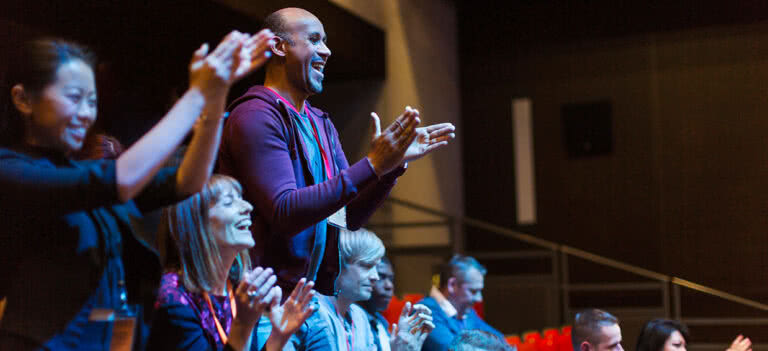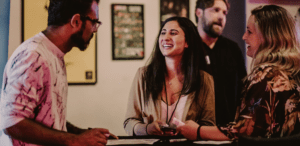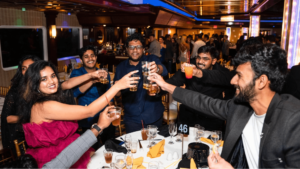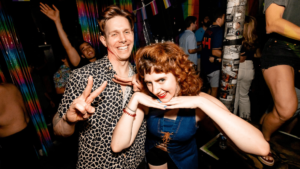There’s no doubt that conferences are one of the most popular event types in the business world. But just because demand is high doesn’t mean success is guaranteed. Pulling off a wildly successful conference like Dreamforce, for example, takes a lot of hard work — and a total shift in mindset.
Manifold co-founding partner and creative director Brian Mullin should know. His creative agency has helped brands like Zillow, GE, Facebook, LinkedIn, and Uber created immersive and engaging live experiences that make headlines. And in this post, Mullin will share how traditional, presentation-based conferences can reinvent themselves in the modern era.
Strike the balance between entertainment and education
People attend your conference for a reason, whether that’s to learn something new or connect with people in their industry. But they also want to have fun while doing so, so it’s up to you to ultimately find the right balance between entertainment and education.
“People like to be entertained,” says Mullin. “But before you book a band to play before the keynote, consider your attendees’ perspective.” If they’ve paid to see a specific speaker, they’ll feel the band is cutting into the most valuable aspect of your event and it will be irritating.
Takeaways:
- Make sure the entertainment syncs with your agenda, otherwise your attendees will wonder why you wasted their time and money.
- Don’t jump on the latest trends just because you can. The speed at which a trend can become a gimmick isn’t just bad for your brand reputation. You could end up wasting money on trends that won’t be relevant by the time your conference has kicked off.
Be willing to reinvent the wheel
An experience on the scale of Dreamforce, MozCon, or SXSW requires significant resources, including time, budget, and people, as well as skillful project management. Which means you need to be willing and able to collaborate and compromise to get things done.
Mullin says conference creators need to be open to unconventional ideas, even for elements typically set in stone. “Your registration area should always be near the front,” he says. “But when it comes to the refreshments or charging stations — anything is possible. Allow yourself to let go of how something is supposed to be done and think about how it could be done.”
Takeaways:
- Ask your team to consider changes to your conference’s floorplan. Tell them that changes to the layout should challenge conference-goers’ expectations.
- Embrace discomfort as you approach your site map — especially if you’re working with an external creative agency.
Don’t underestimate the scale of the project
Not having enough time for the planning process can be disastrous for a large conference. Mullin says planning an innovative, world-class experience needs to start nine to twelve months before the event. Which means consistency and clarity are important from the get-go.
“It helps to have a clear vision for what you hope to accomplish. Decisions made earlier in the planning process can be reversed,” he says. “But the changes can create noticeable inconsistencies in the attendee experience — especially at large conferences.”
Takeaways:
- Work closely with your team or agency in the early stages of the planning process. The most important decisions, according to Mullin, are made in the first few months.
- Understand how reversing a decision will affect your plan. An unplanned change may seem harmless at first, but you’ll sleep better at night knowing deadlines will still be met — or worse, the attendee experience will suffer.
How to propel your conference into the future
Want more actionable advice from the experts on creating a conference that exceeds attendee expectations now, and in the future? Check out The Executive’s Guide to Creating an Out of This World Conference.






